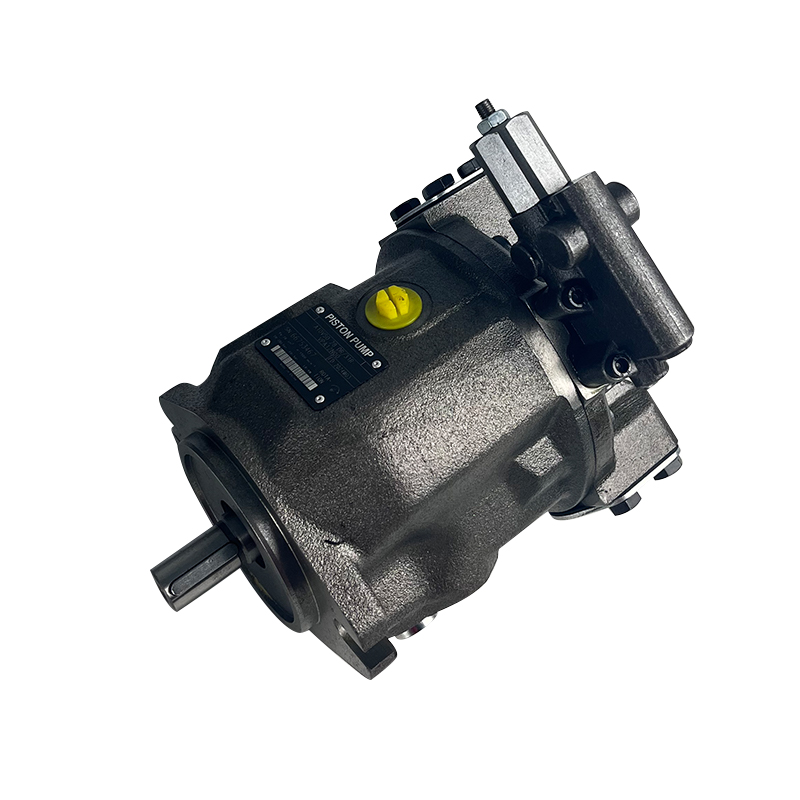Hydraulic Piston Pumps excel in high-load and high-vibration working environments, but also face some challenges. The following is a detailed analysis of their working principles, performance characteristics, potential problems and optimization strategies:
1. Performance of hydraulic piston pumps in high-load and high-vibration environments
(1) Performance under high-load conditions
advantages :
High pressure capability: Hydraulic piston pumps are usually designed for high-pressure applications and can withstand pressures up to 350 bar or even higher, making them ideal for high-load applications.
High efficiency: Piston pumps have high volumetric efficiency and mechanical efficiency, and can maintain stable energy conversion efficiency under high-load conditions.
Precise Control: Due to the good sealing between the plunger and the cylinder, hydraulic piston pumps can provide precise flow and pressure output under high loads.
challenges :
Increased internal leakage: Under high-load conditions, the seal and plunger pair inside the pump may experience slight deformation due to high pressure, resulting in increased internal leakage and thus reduced volumetric efficiency.
Increased wear: High loads will cause faster wear on key components such as plungers, cylinders and valve plates, which affects the life of the pump.
(2) Performance in high-frequency vibration environments
advantages :
High structural strength: The core components of hydraulic piston pumps (such as plungers, swash plates and cylinder blocks) are usually made of high-strength materials and can withstand greater vibration and impact.
Fast dynamic response: The design of piston pumps allows rapid adjustment of flow and pressure to meet dynamic demands in high-frequency vibration environments.
challenges :
Fatigue damage: High-frequency vibration can cause fatigue cracks in the pump housing, bearings or joints, especially in long-term operation.
Noise and vibration transmission: High-frequency vibration can cause pump resonance, increase noise and affect system stability.
Seal failure: Vibration can cause seals to loosen or fail, resulting in leakage problems.
2. Key factors affecting performance
(1) Material selection
The main components of hydraulic piston pumps (such as plungers, cylinders, and swash plates) require the use of high-strength and wear-resistant materials such as alloy steel, ceramics, or special coating materials to cope with the stress and wear caused by high loads and high-frequency vibrations.
(2) Lubrication and cooling
Under high-load and high-frequency vibration environments, hydraulic oil not only serves as a power transmission medium, but also plays a role as a lubricant and coolant. If the lubrication is insufficient or the oil temperature is too high, it will accelerate the wear of components and affect the performance of the pump.
(3) Sealing technology
The quality of the seal directly affects the reliability and life of the pump. High-performance sealing materials (such as polyurethane or fluorine rubber) and advanced sealing design can effectively reduce the risk of leakage.
(4) System design
The overall design of the hydraulic system (such as piping layout, vibration damping devices, accumulator configuration) has an important impact on the performance of the pump. Improper system design can amplify the vibration effect and put additional stress on the pump.
Hydraulic piston pumps work well in high-load and high-frequency vibration working environments, but they also have to deal with problems such as internal leakage, wear and fatigue damage. This comprehensive optimization not only extends the service life of the pump, but also ensures efficient operation of the hydraulic system.

 English
English русский
русский Español
Español عربى
عربى

